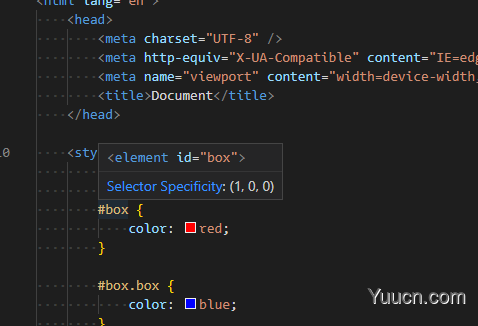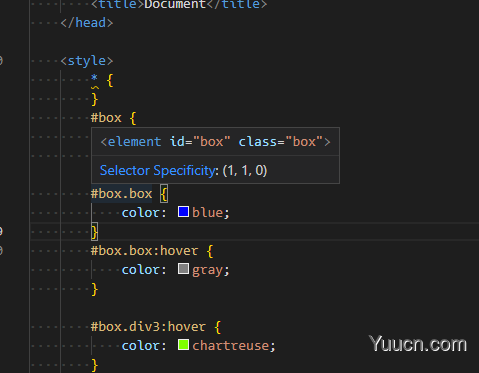1. id选择器
<style>
#container {
width: 100px;
}
</style>
<body>
<div id="container"></div>
</body>
2. class选择器 | 类选择器
<style>
.container {
width: 100px;
}
</style>
<body>
<div class="container"></div>
</body>
3. 元素选择器
<style>
div {
width: 100px;
}
</style>
<body>
<div></div>
</body>
4. 通用选择器
<style>
*{
margin: 0;
padding: 0;
box-sizing: border-box;
}
</style>
<body>
<div></div>
</body>
5. 属性选择器
<style>
/* 存在title属性的<a> 元素 */
a[title] {
color: purple;
}
/* 存在href属性并且属性值匹配"https://example.org"的<a> 元素 */
a[href="https://example.com"]
{
color: green;
}
/* 存在href属性并且属性值包含"example"的<a> 元素 */
a[href*='link'] {
font-size: 2em;
}
/* 存在href属性并且属性值结尾是".org"的<a> 元素 */
a[href$='.org'] {
font-style: italic;
}
/* 存在class属性并且属性值包含以空格分隔的"logo"的<a>元素 */
a[class~='logo'] {
padding: 2px;
}
/* 表示带有以 class 命名的属性,且属性值是以 link6 开头的元素。 */
a[class$='link7'] {
color: red;
}
</style>
<body>
<a href="#" title="链接">link1</a>
<a href="https://example.com">link2</a>
<a href="https://link.com">link3</a>
<a href="https://link2.org">link4</a>
<a class="link logo">link5</a>
<a class="link621312">link6</a>
<a class="asdblink7">link7</a>
</body>
6. 选择器列表
<style>
a,
p {
color: red;
}
</style>
<body>
<a href="#">1</a>
<p></p>
</body>
7. 后代选择器
<style>
ul.container li {
color: red;
}
</style>
<body>
<ul class="container">
<li>idx</li>
<li>idx</li>
<li>idx</li>
</ul>
</body>
8. 一般兄弟选择器
<style>
p ~ span {
color: red;
}
</style>
<body>
<span>This is not red.</span>
<p>Here is a paragraph.</p>
<code>Here is some code.</code>
<span>And here is a span.</span>
</body>
8. 相邻兄弟选择器
<style>
li:first-of-type + li {
color: red;
}
</style>
<body>
<ul>
<li>One</li>
<li>Two!</li>
<li>Three</li>
</ul>
</body>
9. 伪类
<style>
p:hover {
color: red;
}
</style>
<body>
<p>hover</p>
</body>
css 优先级
选择器的优先级由四个部分相加
- 千位: 如果声明在 style 的属性(内联样式)则该位得一分。这样的声明没有选择器,所以它得分总是1000。
- 百位: 选择器中包含ID选择器则该位得一分。
- 十位: 选择器中包含类选择器、属性选择器或者伪类则该位得一分。
- 个位:选择器中包含元素、伪元素选择器则该位得一分。
| 选择器 | 千位 | 百位 | 十位 | 个位 | 优先级 |
|---|---|---|---|---|---|
h1 |
0 | 0 | 0 | 1 | 0001 |
h1 + p::first-letter |
0 | 0 | 0 | 3 | 0003 |
li > a[href*="en-US"] > .inline-warning |
0 | 0 | 2 | 2 | 0022 |
#identifier |
0 | 1 | 0 | 0 | 0100 |
| 内联样式 | 1 | 0 | 0 | 0 | 1000 |
比较时,按照首位开始比较谁大,比如千位为1,那么优先级最高,如果千位为0,那么看百位,有id就加一,谁大谁优先级高
1000 > 0100 > 0010 > 0001 > 0000
1000 > 0200 > 0030 > 0009 > 0000
*优先级最低 为 0000
如果使用vscode,在定义style时,可以鼠标划入类,会显示优先级,如下图:


